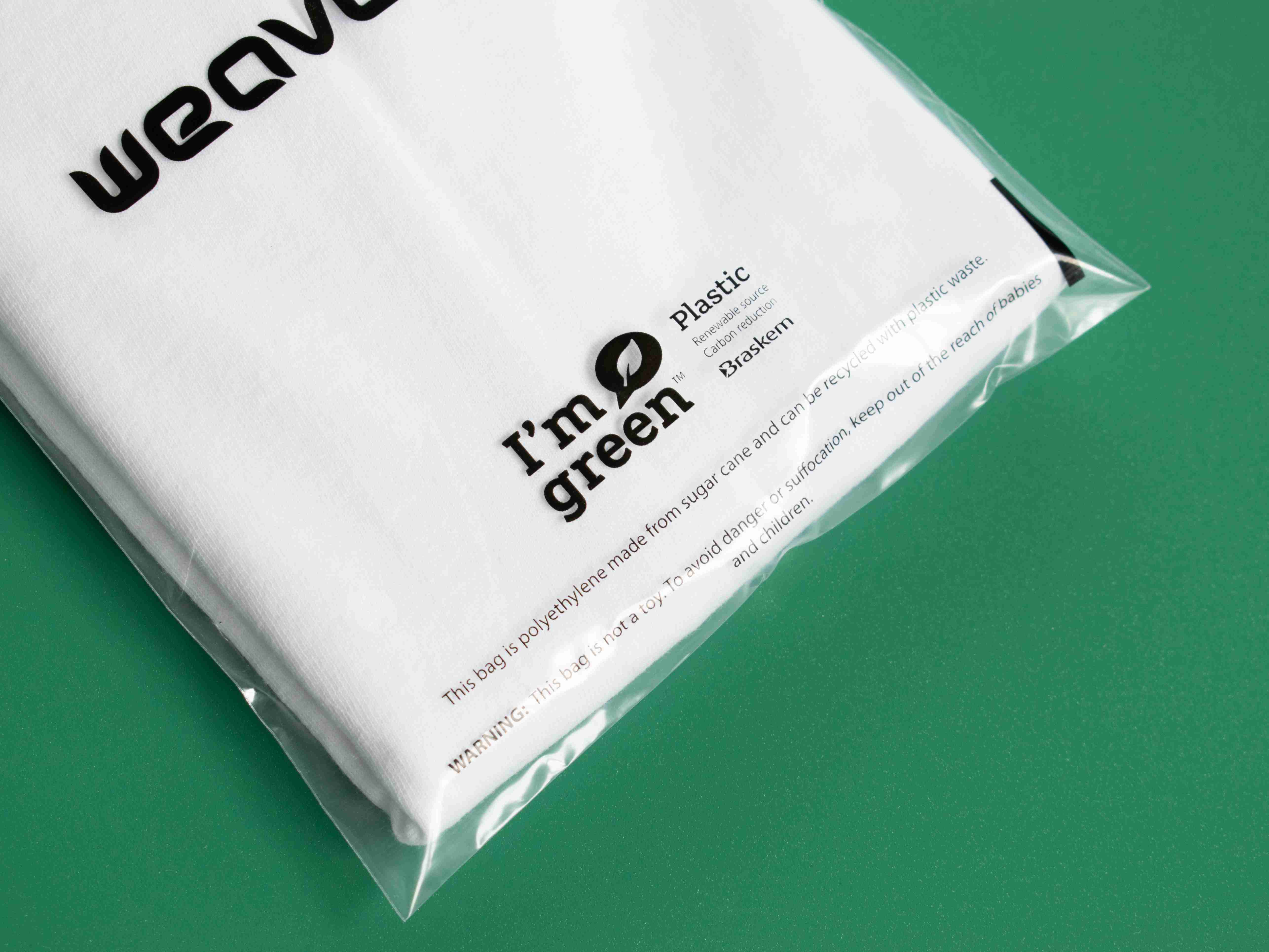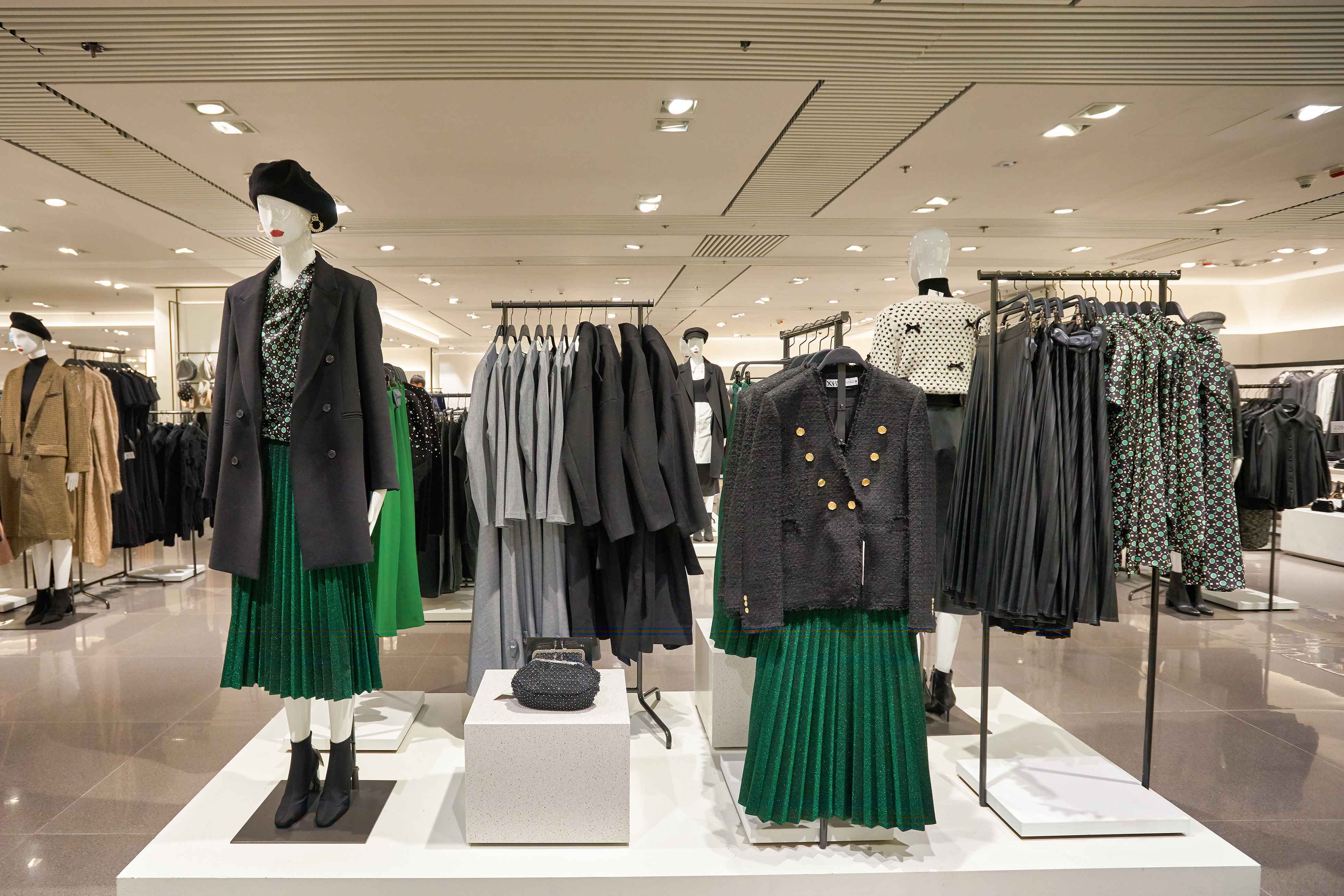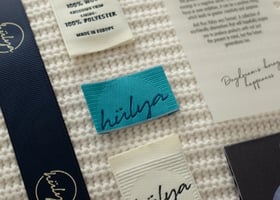Is Nike sustainable? Focusing on a brighter future
Is Nike sustainable? Let's look at past, present and future initiatives to find out.

Nike is an instantly recognisable name worldwide, whether for its iconic trainers, performance activewear, celebrity collaborations or sports sponsorships. But is Nike sustainable? Let’s find out.
As governments, consumers and brands become more eco-conscious, it's interesting to see how big players like Nike choose to respond.
- Behind the Swoosh
- The past: Criticisms and responses
- The present: Investment in innovation
- The future: Move to Zero
- Is Nike sustainable?
- Want to make your brand more sustainable?
Behind the Swoosh
After a turbulent history, Nike has set clear goals to improve sustainability and make a difference, predominantly by 2025. Nike has been working towards sustainability by introducing ‘Move to Zero’ initiatives and using sustainable materials in their collections.
However, to understand how committed the brand is to sustainability, we must look at past criticism, current initiatives and future innovations.
The past: Criticisms and responses
Although Nike strives towards a more eco-conscious business model, it hasn’t always been smooth sailing.
Once upon a time, the name ‘Nike’ was synonymous with sweatshops and unfair labour. Exposed by Jeff Ballinger in 1991, Nike’s relationship with poor working conditions and low wages dates back to the 1970s.
Initially, Nike was slow to respond, further damaging its image and reputation. With time, it started committing to changing how its supply chain operates, regaining customers' trust.
However, the conversation about unfair labour practices didn’t stop there. It resurfaced in 2017 when Nike turned its back on its commitment to the Worker Rights Consortium, limiting worker rights transparency.
Although Nike admitted its failings and made constructive changes in the face of criticism, these actions show the lack of stability in its choices to strengthen its sustainable mission.
But what about the environmental aspect of sustainability?
Ultimately, Nike is a fast fashion brand that manufactures millions of products every year. A lot of waste is associated with that, particularly when you consider that a single trainer sole can last over 1,000 years in landfills.
Nike faced greenwashing allegations, stating products that are part of its sustainability collection aren’t sustainable but are made from environmentally harmful materials and are “predominantly made with virgin synthetic materials.”
Sustainability doesn't happen overnight. It takes time, science-based targets, absolute transparency and a complete operational overhaul.
Let’s look at some initiatives Nike has embraced to help achieve this overarching company goal.
The present: Investment in innovation
In recent years, sustainable initiatives at Nike have kicked into gear, with numerous plans and targets released to help clean up the planet and the brand’s image.
Nike's sustainability goals include:
-
0.5M imperial tons less of greenhouse gas emissions, through increasing the use of environmentally preferred materials to 50% of all key materials: polyester, cotton, leather and rubber.
- Diverting 100% of waste from landfills, with at least 80% of waste recycled back into Nike products and other goods.
- 25% reduction of fresh water usage per kg in textile dyeing and finishing.
From switching SF6 gas in its Air Max to nitrogen to the recycled Space Hippie trainers, sustainability and innovation have been linked together to unlock success for Nike.
Nike realised it couldn’t wait for sustainable solutions — it had to create them.
Nike is a founding member of the Sustainable Apparel Coalition (SAC), an industry-wide group of more than 200 leading apparel and footwear brands, retailers, suppliers, academics and NGOs working to reduce the environmental impacts of apparel and footwear products.
Nike pledges to use only renewable energy sources and is exploring collaboration as a route to sustainability.
Recycling programmes
One of the biggest challenges between brands like Nike and achieving sustainability is the amount of waste they produce. Currently, 92 million tonnes of textile waste end up in landfills every year.
How does Nike plan to reduce this number?
Many brands like Nike are adopting a circular fashion model to encourage positive change in the industry.
Recycling programmes are some of the most effective ways of reducing waste, as they involve the whole supply chain, including the end consumer. Incentivising consumers to recycle their products with the original manufacturer can close the loop in the fashion supply chain.
This might explain why Nike has launched a recycling and donation programme to help them reach their sustainability targets.
Nike accepts worn shoes and apparel from any sportswear brand, which consumers can drop off at any participating Nike store. It’s then sorted into batches for recycling or donation, with some products sent for recycling and others cleaned and donated.
The result? Fewer waste materials and products in landfills, particularly when most sportswear products are made up of harmful fibres that don’t biodegrade, such as polyester.
The brand takes things one step further with Nike Grind. By no means a new initiative, Nike Grind was started in 1992 to create a continuous loop without waste, repurposing old shoes that would otherwise head to landfills.
Under Nike Grind, old, damaged, surplus shoes are broken down and reused to create rubber, foam, leather, textiles and thermoplastics. These recycled materials can be used for playgrounds, stoor flooring and displays, turf fields, courts, tracks and more, creating a sustainable sports future for the next generation.
Nike Re-Creation is a recreation project in collaboration with Greater Goods that focuses on creating thoughtful, sustainable products. By collecting local vintage and dead stock products and salvaging parts of materials still good enough to use, Nike creates unique, newly designed and manufactured pieces that are truly sustainable.
This is what sustainability is truly about — not only minimising fashion brands' impact on the environment but also finding innovative ways to give back to people.
Materials
For a brand to be truly sustainable, its entire supply chain must be eco-friendly. Materials account for more than 70% of any product’s footprint and are key to determining if brands are sustainable.
For instance, the Better Cotton Initiative has backed 100% of Nike’s rival — Adidas' — cotton since 2018, making a huge difference to the brand's sustainability.
While Nike sometimes chooses recycled and vegan leather, it also uses wool, down, exotic animal skin, shearling, exotic animal hair and silk but doesn’t specify their sources. However, Nike has changed its CSR policy and is committed to complying with the certified Responsible Wool Standard (RWS) in its product range, avoiding mulesing.
No matter the energy sources you use or how much plastic packaging is involved, if the materials aren’t made sustainably or reusable after customer use, the processes will have a negative, irreversible impact on the environment.
Thankfully, Nike is heading in the right direction, with its use of sustainable materials increasing from 41% to 59% in 2020. Nike apparel labelled with ‘sustainable materials’ has at least 50% recycled content.
Nike significantly reduces its emissions and impact by reusing, recycling, and repurposing existing materials. Here’s a snapshot of some of the materials initiatives Nike is championing to help make it more sustainable.
Nike Flyknit
An ultra-flexible, lightweight fabric made from 60% less waste than traditional footwear, thanks to precision engineering. Each Flyknit shoe upper contains up to seven recycled plastic bottles.
Nike Air
All Nike Air soles are made from at least 50% recycled manufacturing waste and as of 2020, the Nike Air manufacturing facilities in North America are powered by 100% renewable wind energy.
Cushioning systems
90% of the waste materials for Air soles are repurposed into innovative cushioning systems.
Nike Forward
An all-new material that's ultra-thin, soft, warm and lightweight, with a reduced carbon footprint of 75% on average.
Nike Flyleather
Made from 50% recycled leather fibres and synthetic materials, this recycled leather has all the properties of virgin leather.
The future: Move to Zero
Nike is taking many steps in the right direction but has a long way to go to become truly sustainable. The brand needs to set and meet impactful targets that alter how brands perceive sustainability despite increasing demands.
But it won’t come without challenges, particularly related to consumer demand, which shows no signs of slowing down.
Due to demand from ‘sneakerheads’ and collectors, Nike’s leather usage has jumped up 35% due to increased demand for iconic designs, such as Dunks. Leather has one of the highest carbon footprints of any trainer material, which isn't doing any favours for Nike’s carbon emissions targets.
This doesn't mean Nike isn't introducing more sustainable initiatives to help combat these challenges. It’s working with celebrities like Billie Eilish to spread the message about climate change and spark the conversation with their customers, hoping sustainability becomes a focus for them, too.
Most significantly, in 2019, it announced its ‘Move to Zero’ mission — ‘Nike’s journey toward a zero carbon and zero waste future.' It highlights Nike’s commitment to addressing the climate crisis with clear, timely targets to meet.
1. Nike will power owned-and-operated facilities with 100% renewable energy by 2025.
2. Nike will reduce carbon emissions across its global supply chain by 30% by 2030, in line with the Paris Agreement of 2015.
3. Nike diverts 99% of all footwear manufacturing waste from landfills.
4. Nike will divert more than 1 billion plastic bottles per year from landfills to create yarns for new jerseys and uppers for Flyknit shoes.
5. The Reuse-A-Shoe and Nike Grind programs convert waste into new products, playgrounds, running tracks and courts.
Is Nike sustainable?
Can a fast-fashion brand be sustainable while driving hyper-consumerism, trends and fast supply chains? The answer is mixed.
Accused of lacking transparency when proving its efforts, Nike is currently tracking behind the 2025 target, primarily impacted by its growth in leather trainer sales. The brand will generate over $51 billion in revenue in 2024, so Nike can invest more in initiatives and inspire change in the industry.
However, Nike undoubtedly focuses more on sustainability than many other major players. It’s constantly investing in new, eco-friendly materials, setting clear targets and keeping progress transparent, showing it has come a long way since the 1990s' sweatshop days.
With an overall rating of 'It's a Start' by GoodOnYou, Nike has a few promising environmental measures in place, but there's still a lot of work to be done.
Summary
- Nike's main sustainability strategy is "Move to Zero," a plan aiming for a zero-carbon and zero-waste future.
- In the past, Nike has faced criticisms regarding unfair labour practices ("sweatshops") and allegations of greenwashing.
- However, Nike is working towards a circular fashion model through programs like "Nike Grind," which repurposes old and surplus shoes into new materials for products and other items like playgrounds.
- The brand has increased its use of environmentally preferred materials, with 59% of its key materials being more sustainable as of 2020. They are also investing in new eco-friendly materials like Flyknit and Nike Forward.
- This blog highlights a significant challenge with a 35% increase in leather usage for popular shoe designs, which negatively impacts their carbon emissions goals.
- Nike is currently tracking behind on its sustainability goals for 2025, but its financial position allows for continued investment in these initiatives.
- Nike's is also a part of the Sustainable Apparel Coalition, an organisation dedicated to improving sustainability in the apparel industry.
We help make brands more sustainable
Although brands like Nike have a long way to go, it puts brands in a brilliant position to learn from downfalls, make positive changes from the get-go and give consumers what they demand — while protecting our planet at the same time.
Our sportswear brochure has all the latest inventive fabrics, trims and packaging to elevate your brand while keeping things eco-friendly. Download your copy today.
Photo by Thomas Serer









